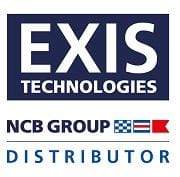ECDIS mandation is coming. On a rolling timetable starting in July this year, certain vessels will be required to use ECDIS as the primary means of navigation; all but a few of them will use ENCs as the data that drives the ECDIS hardware. In order to meet SOLAS requirements, those ENCs must be official ENCs.
What makes an ENC official? The International Hydrographic Organization (IHO) lays it out like this:

Official ENCs are Vector Charts
Electronic charts currently take two forms: Electronic Navigational Charts (ENCs) and Raster Navigational Charts (RNCs). Both types of charts can be used in a type-approved ECDIS to meet the requirements of SOLAS Regulations V/19 and V/27 (mandating that vessels maintain navigational charts sufficient for their intended voyage).
RNCs are digital images of paper charts. The source data for the chart is compiled electronically just as with paper charts, but before a printer puts ink to paper, a “rasterized” image of the chart is saved as a digital file and features in the chart image are georeferenced. SOLAS carriage requirements mandate that vessels maintain a paper backup of every RNC in use.
ENCs, by contrast, are files containing a database of chart features and georeferenced data, called “vector” charts. Essentially, ENCs contain all the building blocks necessary to compile a chart image without containing the image itself. This allows the chart display system to customize the chart to the user’s preference. Certain information can be filtered out of a cluttered display, colors can be adjusted for optimal visibility in night or day, and the image can be rotated in line with the ship’s heading without rotating text or symbols as well.
Compliant with S-57
The IHO adopted a digital chart standard—designated S-57—which specifies the structure and format of ENCs. IMO’s Performance Standards for ECDIS requires compatibility with S-57 ENCs in order for an ECDIS to be type-approved; this has made S-57 the de facto standard for vector charts.
Because ENCs might be subject to unauthorized modification or illegal copying, the IHO has adopted S-63: The IHO Data Protection Scheme. This is the standard encryption protection for ENCs. S-63 defines the technical details for the particular method of encryption used, as well as operating procedures for charts display systems to use S-63 charts. An S-63 chart is simply a S-57 chart that has been encrypted. Once an S-63 chart is decrypted, it is essentially an S-57 chart.
Official ENCs comply either with S-57, or with S-63 which implies compliance with S-57. The main features of S-57 charts are as follows:
Database of objects
An ENC is a database of chart features and georeferenced data which define chart features without using images. S-57 employs a standardized set of codes to efficiently reference common chart features. Each feature is georeferenced to points, lines, or areas defined around latitude and longitude positions. In this way, the ENC defines all the building blocks necessary to compile a chart image.
Information must be provided in English
Because English is the internationally recognized language of the sea, IHO requires all information in an ENC to be provided in English. S-57 also allows for the same information to be provided in a national language, as long as it is also provided in English.
System and Media Independent
S-57 describes an electronic file. That file will be identical on any operating system, and can be stored on any medium—optical disk, USB drive, floppy disk, etc. This means that ENCs are not dependent on any particular operating system or storage media, and can take advantage of new technologies without requiring any change to the standard.
Issued by an authorized Hydrographic Office
Vector charts can be produced from data collected by private hydrographic surveys. However, such vector charts are not ENCs as the data contained in an ENC must be issued by an authorized Hydrographic Office. Just over half of IHO’s 80 member states issue data through a national hydrographic office. The only exception is a consortium that includes Malaysia, Indonesia, Singapore and Japan which issues ENCs for the Malacca and Singapore Straits.
In a document titled “Facts About Electronic Charts and Carriage Requirements,” the IHO states, “by definition, the term ENC only refers to officially endorsed vector charts.” The same document goes on the explain:
An ECDIS can determine if data is from either an ENC or a private source by interrogating the Agency Code (a two character combination which is unique for any data producer) embedded in the data. Using this code an ECDIS will warn mariners that they must navigate with an official up to date paper chart if data from a private source is in use. The ECDIS will show a warning on the ECDIS screen: «No Official Data–Refer to paper chart»
Official ENCs are vector charts, compliant with S-57, issued by an authorized Hydrographic Office.
If you’re interested in more information about ENCs or need to purchase ENC coverage, contact us.








